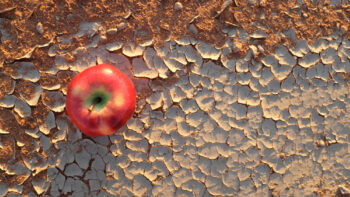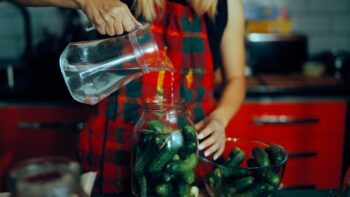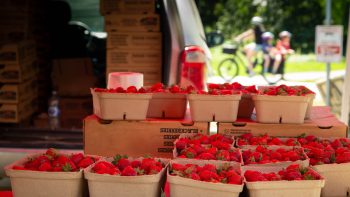Food Storage and Preservation: Tips for Maximizing Freshness and Reducing Waste
Food waste is a growing concern among people around the world. Mastering the art of food storage and preservation is not only a savvy budgeting move but also a responsible step towards reducing our environmental footprint.
By understanding how to maximize the shelf life of groceries and employing techniques such as freezing, canning, and pickling, you can often significantly reduce waste while ensuring that your food remains safe, fresh and delicious.
In this article, we will explore these strategies and provide you with valuable insights on keeping your food fresher for longer.
Maximizing the Shelf Life of Groceries
Maximizing the shelf life of groceries is a crucial step in your journey towards reducing food waste and ensuring the freshness of your meals. It’s a skill that can save you money, reduce your environmental impact, and guarantee that your food remains not just safe but also delicious.
Whether you’re a seasoned home cook or just starting your culinary adventure, these tips can help you make the most of your ingredients and minimize waste.
Proper Storage
One of the simplest yet most effective ways to extend the shelf life of your groceries is to store them correctly. Plus, proper storage is key to keeping foods safe for eating and preventing things like food borne illnesses.
Different foods have different requirements, but here are some general guidelines:
- Keep fruits and vegetables in the crisper drawer of your refrigerator. Some fruits, like apples and bananas, can emit ethylene gas, which can accelerate ripening. Store ethylene-producing fruits away from ethylene-sensitive ones.
- Use airtight containers for grains, cereals, and pantry staples to prevent pests and moisture from compromising their quality.
- Store dairy products and eggs in their original packaging in the coldest part of the refrigerator.
- Keep raw meat, poultry, and seafood in the coldest part of the refrigerator and use or freeze them within a few days.
First In, First Out (FIFO)
Adopt the FIFO principle in your kitchen, which means using older products before newer ones. This helps ensure that nothing gets forgotten and goes bad at the back of the pantry or fridge.
Freezing Techniques
Freezing is an excellent method for preserving various foods, but it’s essential to do it right to maintain flavor and texture.
- Flash Freezing – When you have excess fruits or vegetables, consider flash freezing them. Spread them out on a baking sheet and freeze them individually before transferring them to a freezer bag. This prevents clumping and makes it easy to use only what you need.
- Vacuum Sealing – Investing in a vacuum sealer can significantly extend the shelf life of frozen foods. Removing air from the packaging reduces the risk of freezer burn and preserves the food’s flavor and texture.
Canning and Pickling
Canning and pickling are age-old techniques that can transform fresh produce into delicious, shelf-stable treats.
- Water Bath Canning – Water bath canning is ideal for high-acid foods like fruits, tomatoes, and pickles. The process involves submerging sealed jars in boiling water to create a vacuum seal. With proper sterilization and sealing, these items can last for years.
- Pressure Canning – Pressure canning is suitable for low-acid foods like vegetables, meats, and poultry. The high temperatures achieved during pressure canning eliminate bacteria and preserve food safely for an extended period.
- Pickling – Pickling not only preserves vegetables but also infuses them with delightful flavors. You can experiment with various vinegar-based brines and spices to create unique pickled dishes.
Other Useful Tips
- Use Freshness Indicators – Labels like “best before” or “use by” dates are helpful, but they aren’t strict expiration dates. Use your senses—sight, smell, and taste—to determine if a food item is still good. Trust your judgment, and you’ll reduce unnecessary waste.
- Repurpose Leftovers – Don’t let leftovers go to waste. Get creative with your meals by transforming yesterday’s dinner into a new, exciting dish. Soups, stir-fries, and casseroles are excellent choices for repurposing ingredients.
In the quest to reduce food waste, mastering food storage and preservation techniques is a valuable skill. By following these tips and techniques, you can be better prepared to maximize the shelf life of your groceries, reduce waste, and enjoy fresh, delicious food for longer periods.
Not only can this benefit your wallet, but it can also contribute to a more sustainable future for our planet. So, next time you’re in the kitchen, remember these strategies to make your meals both tastier and eco-friendly.



